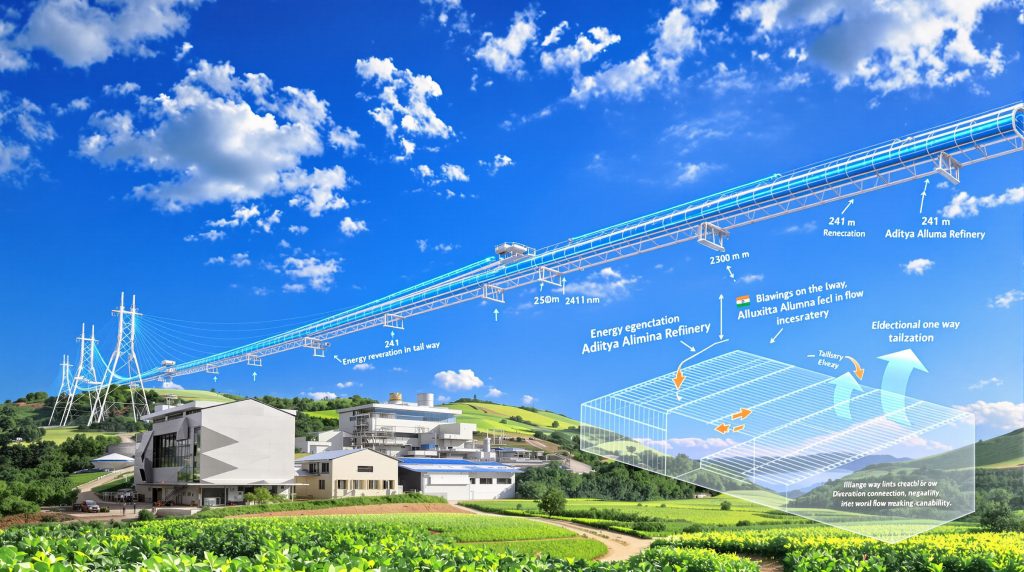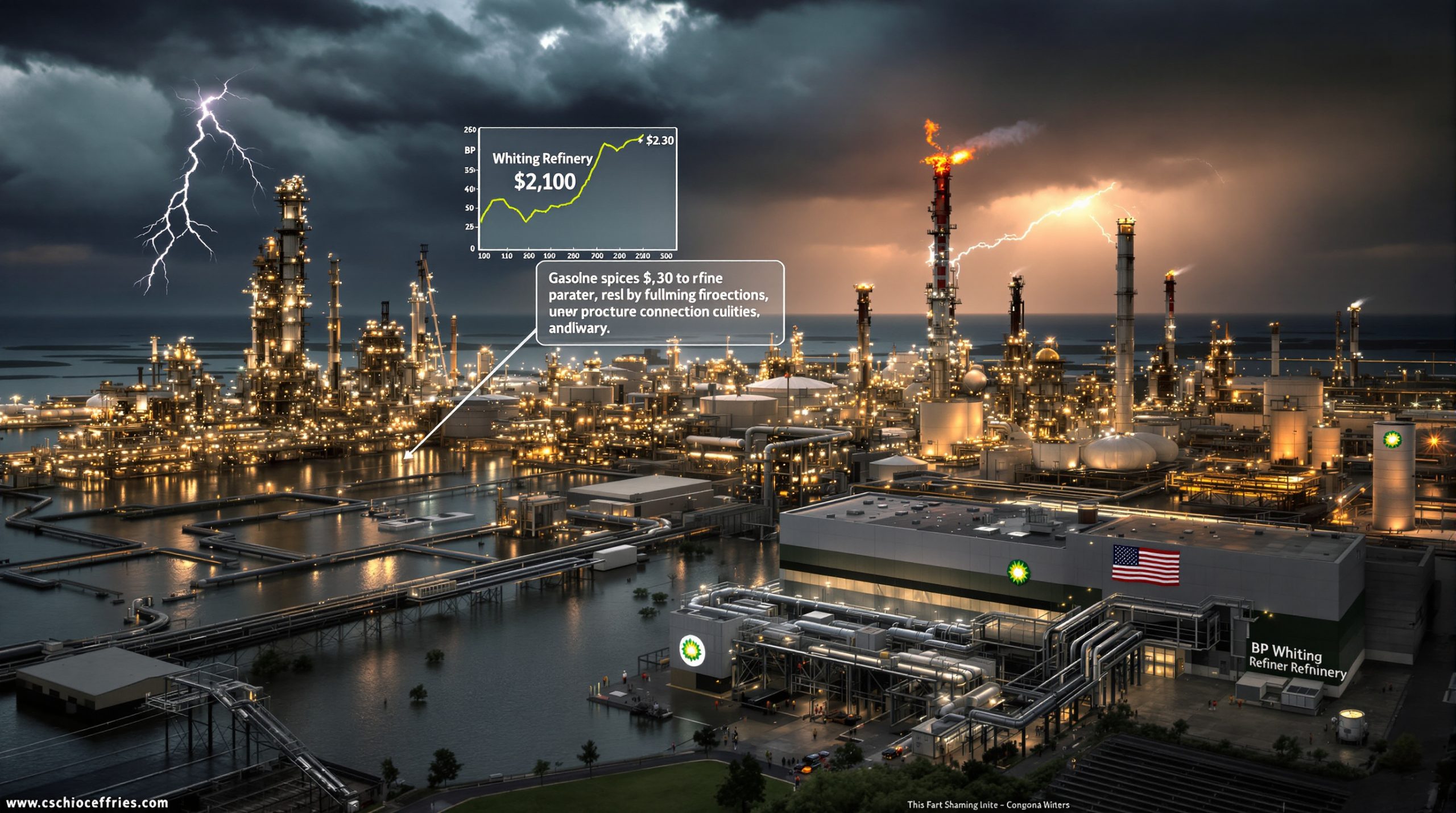Transforming Mining Transport: India's First RopeCon System at Aditya Alumina Refinery
The mining and industrial sectors in India are witnessing a significant technological advancement with the introduction of the country's first RopeCon aerial conveying system. This innovative material transport solution, contracted to the Doppelmayr Group, represents a major step forward in sustainable mining logistics and efficient material handling for one of India's largest aluminum producers.
What is the RopeCon System Being Built in India?
Project Overview and Location
Doppelmayr Group has been awarded a contract to construct India's first-ever RopeCon system at the Aditya Alumina Refinery in Kansariguda, Odisha. This groundbreaking project for Hindalco Industries Ltd, a major player in India's aluminum production sector, is scheduled for commissioning in the third quarter of 2027.
The project marks a significant milestone in India's mining infrastructure development, introducing advanced aerial conveying technology to the country's industrial landscape. By selecting this innovative transport solution, Hindalco demonstrates a forward-thinking approach to solving logistical challenges in mining operations.
Technical Specifications and Capabilities
The RopeCon system will span approximately 2,300 meters across challenging terrain with a significant elevation change of 241 meters. This aerial conveyor is engineered to transport bauxite at an impressive rate of 1,500 tonnes per hour to the alumina refinery.
A key feature of this installation is its bidirectional transport capability, with future plans to utilize the system for transporting tailings in the opposite direction. This dual functionality maximizes the infrastructure investment while providing comprehensive material handling solutions.
Perhaps most remarkable is the system's minimal footprint – requiring only four support towers across its entire length. This significantly reduces ground disturbance compared to conventional conveyor systems that might require dozens of support structures over similar distances.
How Does the RopeCon Aerial Conveying System Work?
Engineering Design and Functionality
The RopeCon system represents a sophisticated engineering solution that combines elements of ropeway technology with conventional conveyor systems. The design allows it to "fly" over landscapes while maintaining sufficient ground clearance throughout its route, effectively traversing challenging topography that would be difficult for traditional transport methods.
The system utilizes a series of continuously moving belts supported by cables suspended between towers. This configuration allows materials to be transported over long distances regardless of the intervening terrain – crossing valleys, rivers, forests, or agricultural land with minimal disturbance to the ground below.
Unlike conventional conveyors that require substantial ground-based infrastructure, the RopeCon needs significantly fewer support structures. The Aditya Alumina Refinery installation will utilize just four towers across its 2.3-kilometer span, dramatically reducing environmental disruption and construction requirements.
Environmental and Energy Features
One of the most impressive aspects of the RopeCon system is its energy regeneration capability. During operation, the system can generate up to 907 kWh of electricity through regenerative braking when transporting materials downhill. This energy can be fed back into the power grid or used to support other operations at the facility.
The minimal environmental footprint is another significant advantage. With only four towers required across the entire route, there's substantially less need for land clearing and ground disturbance compared to traditional transport methods like truck haulage or conventional conveyor systems.
The system's ability to traverse agricultural land without disrupting farming activities below represents an important sustainability benefit. Farmers can continue to work their land beneath the elevated system, allowing industrial and agricultural activities to coexist harmoniously.
Why is This RopeCon Installation Significant?
Industry Firsts and Regional Impact
As the first RopeCon system to be implemented in India, this project represents a significant technological leap for the country's mining and industrial sectors. The adoption of such advanced material transport technology signals a growing emphasis on mining industry innovation within India's resource extraction industry.
This installation has the potential to set new standards for mining logistics throughout the country. As neighboring operations observe the efficiency and environmental benefits of this system, we may see increased adoption of similar technologies across India's extensive mining regions.
The implementation of advanced conveying technology in the aluminum supply chain demonstrates a commitment to modernization in one of India's key industrial sectors. With aluminum production being critical to many manufacturing industries, improvements in its supply chain can have wide-ranging economic benefits.
Sustainability Benefits for Mining Operations
The RopeCon system significantly reduces reliance on traditional truck haulage, which typically involves diesel-powered vehicles making countless trips between extraction points and processing facilities. This reduction in vehicle traffic translates directly to lower carbon emissions and reduced fossil fuel consumption.
The system's energy regeneration capability – producing up to 907 kWh during operation – represents a substantial sustainability advantage. This regenerated power effectively reduces the net energy consumption of the transport process, aligning with global efforts to minimize industrial carbon footprints.
The preservation of agricultural land and natural landscapes is another key benefit. Unlike roads and traditional conveyor systems that create barriers and disrupt ecosystems, the aerial design of the RopeCon allows for continued land use and wildlife movement beneath its path.
This installation directly supports Hindalco's stated commitment to implement eco-friendly and sustainable mining practices throughout their operations. As industries face increasing pressure to reduce environmental impacts, such technologies represent important steps toward more responsible resource extraction.
What Are the Economic and Operational Advantages?
Efficiency and Cost Benefits
The RopeCon system provides continuous material transport without the limitations of road-based systems. Unlike truck fleets that operate in cycles with loading and unloading periods, the aerial conveyor delivers a steady, uninterrupted flow of material – maximizing throughput and processing efficiency.
Operational costs are significantly reduced compared to traditional truck haulage. The elimination of fuel consumption, driver wages, vehicle maintenance, and road upkeep represents substantial long-term savings. Additionally, the system operates with minimal human intervention, reducing labor costs and safety risks.
Maintenance requirements for aerial conveying systems are typically lower than for conventional ground-based conveyor installations. With fewer moving parts exposed to dust, debris, and weather elements, the RopeCon can achieve higher reliability and longer service intervals.
The energy regeneration capability – producing up to 907 kWh during downhill transport – creates ongoing operational cost savings. This effectively reduces the net energy consumption of the transport process, lowering electricity costs and improving the overall efficiency of the operation.
Logistical Improvements
The RopeCon will streamline bauxite delivery to the alumina refinery, creating a direct link between extraction and processing areas. This optimized material flow eliminates the multiple handling steps often required with truck transport, reducing material loss and contamination risks.
The planned bidirectional capability offers integrated waste management potential, using the same infrastructure to transport tailings away from the processing facility. This dual-use approach maximizes the return on infrastructure investment while solving multiple logistical challenges.
The aerial system provides reliable transport regardless of weather or ground conditions. Unlike truck haulage, which can be severely impacted by monsoon seasons, the RopeCon can continue operations during heavy rainfall when roads may become impassable.
The installation will optimize the material handling workflow for the entire refinery operation, creating a consistent feed rate that allows for more precise process control. This steady material flow supports more efficient refinery operations compared to the variable delivery rates typical with truck transport.
How Does This Project Compare to Global Mining Transport Solutions?
International Context and Technology Adoption
The RopeCon system has been successfully deployed in mining operations worldwide, with installations demonstrating reliability in diverse environments and applications. This Indian implementation builds on proven technology that has been refined through global operational experience.
The adaptation of this technology to Indian mining conditions represents an important case study in technology transfer. The specific challenges of the Odisha region – including monsoon seasons, agricultural land preservation needs, and complex terrain – have been addressed in the system design.
Compared to traditional conveyor systems that might require extensive land clearing and dozens of support structures, the RopeCon's minimal footprint approach represents a significant advancement. The four-tower design for a 2.3-kilometer span demonstrates remarkable structural efficiency.
This project positions India within the global trend toward sustainable mining logistics. As mining companies worldwide seek to reduce carbon footprints and environmental impacts, aerial conveying systems are increasingly recognized as effective solutions for challenging transport scenarios.
Future Applications and Expansion Potential
This pioneering installation creates possibilities for similar implementations at other Indian mining operations. Sites with challenging terrain, river crossings, or agricultural land preservation requirements could benefit from this proven technology.
The potential exists for technology transfer to different mineral sectors beyond aluminum production. Coal, iron ore, limestone, and other bulk materials could be transported using similar systems, expanding the environmental and efficiency benefits across India's diverse mining industry.
Scalability considerations suggest that the technology could be adapted for varying production requirements. While this installation will transport 1,500 tonnes per hour, the technology can be scaled up or down to match specific operational needs at different sites.
Future integration with broader mine-to-refinery logistics systems offers additional efficiency potential. As data-driven mining operations evolve, the RopeCon could become part of a fully integrated smart mining operation.
FAQ: RopeCon Technology and Implementation
Common Questions About Aerial Conveying Systems
What safety features are incorporated into RopeCon systems?
Modern aerial conveying systems incorporate multiple redundant safety features, including automatic tension monitoring, cable inspection systems, and emergency shutdown capabilities. Many systems include multiple braking systems and automatic fault detection to prevent material spillage or system failures.
How do weather conditions affect RopeCon operations?
Aerial conveying systems are engineered to withstand severe weather conditions including high winds, heavy rainfall, and temperature extremes. The systems can typically operate through monsoon seasons when truck transportation might be severely limited by road conditions.
What maintenance requirements exist for aerial conveying systems?
While specific maintenance schedules depend on operational conditions, these systems generally require less frequent maintenance than truck fleets or ground-based conveyors. Regular inspections of cables, rollers, drive systems, and support structures are typical, with major overhauls scheduled at multi-year intervals.
How does the cost compare to traditional transport methods over the system lifetime?
The initial capital investment for aerial conveying systems is typically higher than establishing truck haulage routes. However, the lifetime operational costs are substantially lower due to reduced energy consumption, minimal labor requirements, and lower maintenance needs. The energy regeneration capability (907 kWh in this installation) further improves the economic equation.
What training is required for local operators?
Operational staff require specialized training in system monitoring, basic maintenance, and emergency procedures. Manufacturers typically provide comprehensive training programs during commissioning, with ongoing support and refresher training throughout the system's operational life.
The Future of Mining Transport in India
Long-term Impact and Industry Transformation
This pioneering RopeCon installation has the potential to influence future mining infrastructure decisions throughout India. As the operational benefits become evident, other mining companies may adopt similar technologies, particularly for sites with challenging terrain or environmental sensitivity.
The advancement of sustainable mining practices in the region represents an important evolution for India's resource extraction industry. As environmental regulations tighten globally, these technologies position Indian mining operations to remain competitive while reducing ecological impacts.
The contribution to Hindalco's operational efficiency and environmental goals demonstrates how technology investments can align economic and sustainability objectives. This balance is increasingly important as consumers and regulators demand more responsible resource extraction practices.
The implementation of mining electrification benefits and renewable energy solutions in transportation systems like the RopeCon establishes a benchmark for innovative material transport solutions in challenging terrain. Future mining developments in India will likely be measured against this standard, potentially accelerating the adoption of sustainable technologies throughout the industry.
Disclaimer: This article contains forward-looking statements regarding the potential impact and benefits of the RopeCon technology in India's mining sector. Actual results may vary based on implementation specifics, operational conditions, and broader industry factors. The projections regarding efficiency gains and environmental benefits are based on currently available information and similar installations in other regions.
Ready to Track the Next Major ASX Mining Discovery?
Stay ahead of the market with real-time alerts on significant ASX mineral discoveries powered by Discovery Alert's proprietary Discovery IQ model. Visit the Discovery Alert discoveries page to explore historic returns from major mineral finds and begin your 30-day free trial today.




